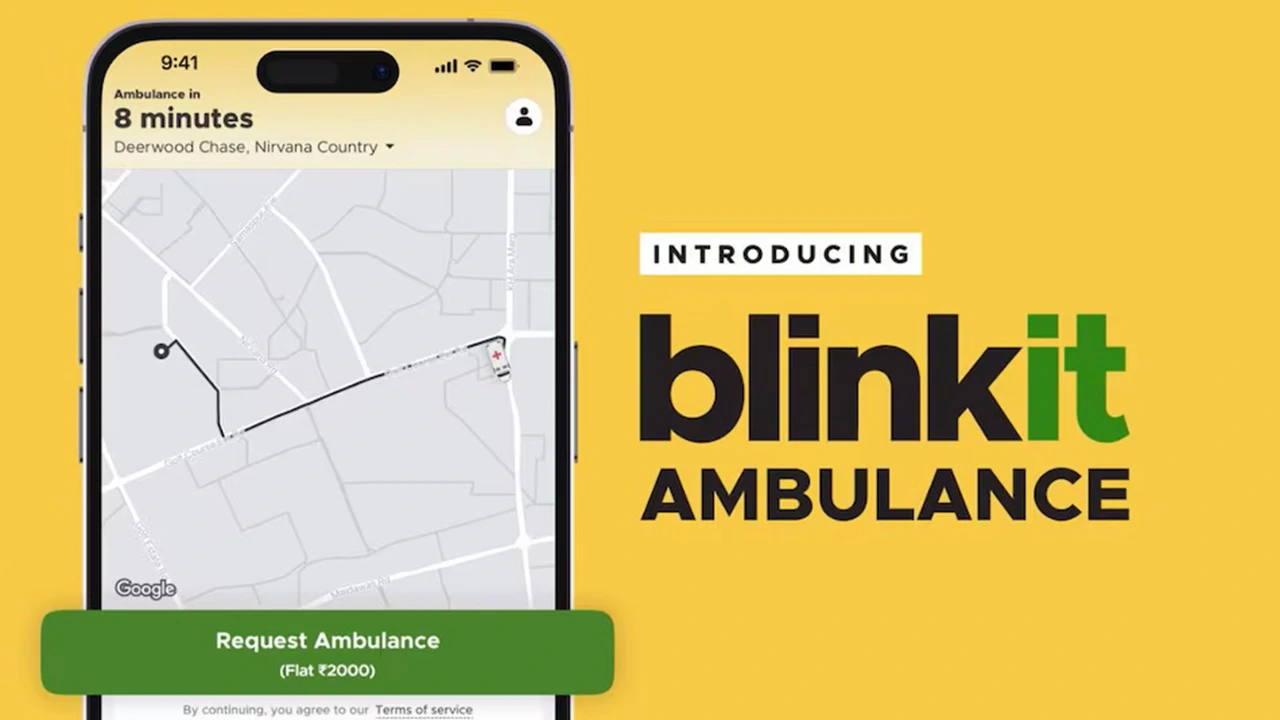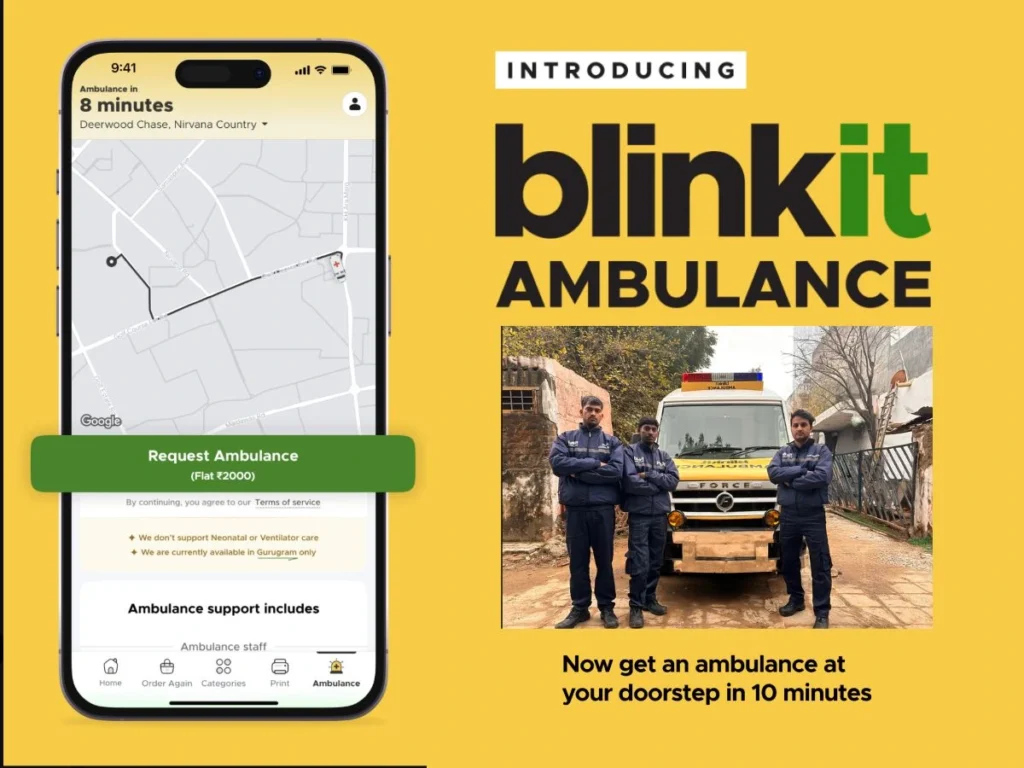In critical medical emergencies, every second counts. Recognizing this urgency, Blinkit Ambulance has emerged as a groundbreaking solution to redefine emergency medical services. By leveraging advanced technology and innovative logistics, Blinkit Ambulance aims to provide quick, efficient, and reliable healthcare support when it matters the most.
This article explores how Blinkit Ambulance operates, its features, impact, and why it represents a significant shift in the way emergency services are delivered.
1. What Is Blinkit Ambulance?
Blinkit Ambulance is a modern emergency medical service that combines:
Technology:
Real-time GPS tracking and AI-driven dispatch systems.
Speed:
Ultra-fast response times, often under 10 minutes in urban areas.
Accessibility:
Services that cater to a wide demographic, including underserved areas.
It’s not just an ambulance service—it’s a holistic emergency response system designed to save lives.
2. How Blinkit Ambulance Operates
The Blinkit Ambulance system relies on cutting-edge logistics and coordination:
App-Based Service:
Users can book an ambulance via a user-friendly mobile app.
The app provides real-time updates on ambulance location and estimated arrival time.
AI-Powered Dispatch:
Advanced algorithms prioritize nearby ambulances based on traffic conditions and medical needs.
Dynamic routing ensures the fastest path to the patient and the hospital.
Collaboration with Hospitals:
Partnerships with leading hospitals ensure immediate medical attention upon arrival.
Data-sharing capabilities enable hospital staff to prepare for patient care in advance.
These features work together to minimize delays and improve patient outcomes.
3. Features of Blinkit Ambulance
a) Quick Response Time
The service is designed to drastically reduce response times by utilizing advanced logistics systems:
Average response time: 8-10 minutes in urban areas.
Real-time tracking for transparency and updates.
b) Advanced Equipment
Blinkit Ambulances are equipped with state-of-the-art medical tools:
Portable ventilators, defibrillators, and oxygen cylinders.
Advanced life support (ALS) for critical cases.
Telemedicine capabilities for remote consultation with specialists.
c) Skilled Medical Professionals
Each ambulance is staffed with trained paramedics and emergency medical technicians (EMTs):
On-the-spot triage and stabilization of patients.
CPR and other life-saving procedures en route to the hospital.
d) Accessibility and Affordability
Blinkit Ambulance aims to make emergency services accessible to all:
Tiered pricing models based on urgency and distance.
Subsidized services for low-income communities.
These features collectively ensure that Blinkit Ambulance is both efficient and inclusive.
4. Technology Driving Blinkit Ambulance
Technology is at the core of Blinkit Ambulance’s innovation:
a) Real-Time GPS Tracking
Allows users and dispatchers to monitor the ambulance’s location.
Ensures transparency and accountability in service delivery.
b) AI and Machine Learning
Predictive analytics for demand forecasting and optimal resource allocation.
AI-driven traffic analysis to avoid delays.
c) Integration with Smart City Systems
Collaboration with city traffic management for green corridor creation.
Use of IoT sensors for monitoring vehicle health and equipment functionality.
This technological ecosystem makes Blinkit Ambulance a model for modern emergency services.
5. Blinkit Ambulance vs. Traditional Services
Here’s how Blinkit Ambulance outperforms traditional ambulance services:
| Feature | Traditional Services | Blinkit Ambulance |
|---|---|---|
| Response Time | 20–30 minutes | 8–10 minutes |
| Booking Process | Phone call, often time-consuming | App-based, quick and simple |
| Equipment | Basic tools | Advanced medical technology |
| Coordination with Hospitals | Limited | Real-time data sharing |
| Cost Transparency | Variable | Transparent pricing models |
By addressing the inefficiencies of traditional systems, Blinkit Ambulance ensures timely and effective care.

6. Impact of Blinkit Ambulance
a) Lives Saved
Faster response times mean critical interventions can begin sooner.
The service has reported a significant reduction in mortality rates during emergencies.
b) Improved Accessibility
Rural areas and underserved communities benefit from extended coverage.
Mobile clinics integrated into ambulances provide preventive healthcare services.
c) Enhanced Patient Experience
Families can track ambulances and receive real-time updates, reducing anxiety.
Better coordination with hospitals ensures seamless transitions for patients.
7. Challenges and Solutions
a) Traffic Congestion
Challenge: Navigating through congested urban traffic.
Solution: AI-driven routing and green corridor collaborations with traffic authorities.
b) Resource Availability
Challenge: Limited availability of ambulances during peak demand.
Solution: Predictive analytics for resource optimization and demand forecasting.
c) Public Awareness
Challenge: Many people are unaware of the service.
Solution: Public campaigns, partnerships with local governments, and integration with healthcare apps.
By addressing these challenges, Blinkit Ambulance continues to improve its service delivery.
8. Future of Blinkit Ambulance
The future of Blinkit Ambulance looks promising, with several potential developments:
a) Electric Ambulances
Transition to electric vehicles for eco-friendly operations.
Solar-powered medical equipment to reduce energy consumption.
b) Expanded Coverage
Increasing service availability in rural and remote areas.
Partnerships with global healthcare providers for international expansion.
c) Integration with Telemedicine
Enhanced telemedicine capabilities for remote diagnosis and treatment.
AI-based triage systems to prioritize critical cases.
d) AI-Driven Health Data Management
Real-time sharing of patient health data with hospitals.
Use of big data analytics for healthcare trends and insights.
These advancements will further solidify Blinkit Ambulance’s role as a leader in emergency medical services.
9. Testimonials and Success Stories
The effectiveness of Blinkit Ambulance is evident through numerous success stories:
Case Study 1:
A 45-year-old cardiac arrest patient received life-saving CPR and was stabilized within 15 minutes, thanks to the quick response of Blinkit Ambulance.
Case Study 2:
In a rural village, Blinkit Ambulance facilitated the safe delivery of a baby by providing on-the-spot medical care.
-
Customer Testimonials:
“The real-time tracking feature gave us peace of mind during a stressful situation.”
“Blinkit Ambulance’s quick response saved my father’s life.”
These stories highlight the real-world impact of this innovative service.
10. Why Blinkit Ambulance Stands Out
Here’s what makes Blinkit Ambulance unique:
Speed and Efficiency:
Lightning-fast response times.
Technology Integration:
AI-driven dispatch and real-time tracking.
Inclusivity:
Services designed for diverse demographics.
Reliability:
Skilled medical professionals and advanced equipment.
These factors make Blinkit Ambulance a game-changer in emergency medical care.
Conclusion
The Blinkit Ambulance represents a paradigm shift in emergency medical services. By combining advanced technology, skilled personnel, and a commitment to accessibility, Blinkit Ambulance has set a new standard for healthcare logistics.
As it continues to innovate and expand, Blinkit Ambulance serves as a beacon of hope for those in need of urgent medical care. Whether you’re in a bustling city or a remote village, Blinkit Ambulance ensures that help is just a few minutes away.
